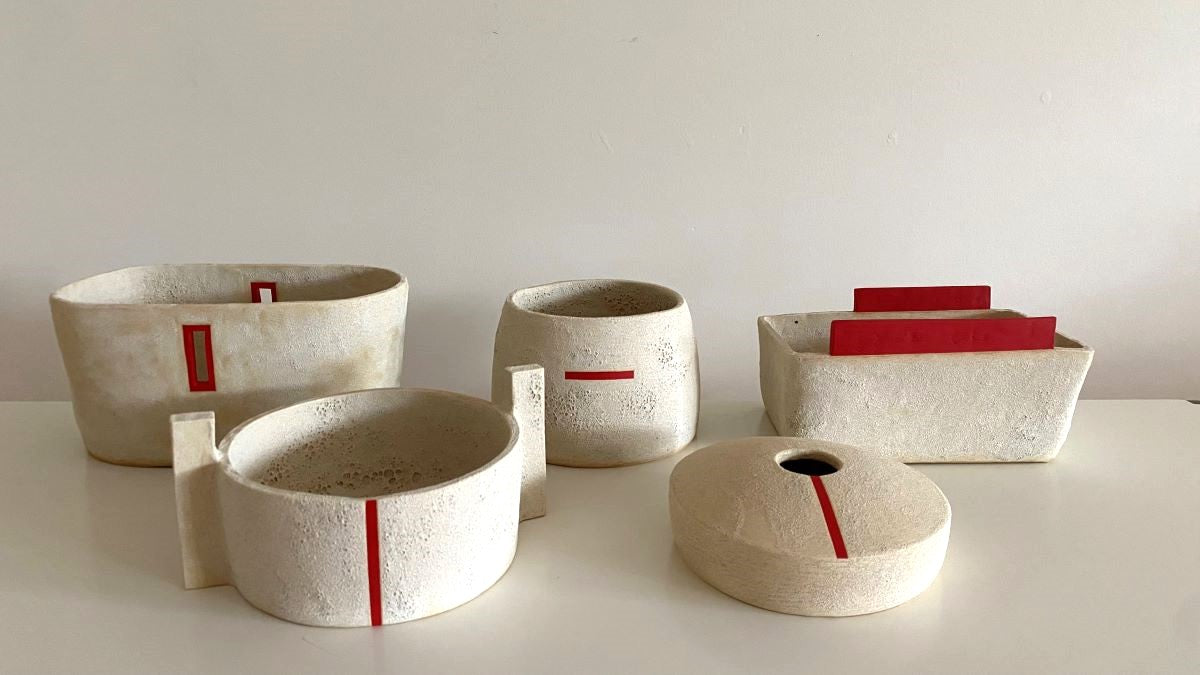Ariel Bullion Ecklund is a ceramic artist, fine art photographer, AND the owner of Corners Gallery in Ithaca, New York. I’ve been so intrigued by Ariel’s multiple roles and how she balances the creative thinking and physical time required for her own fine art practice, with the energy and creativity required for successfully representing the artists in her gallery. Not to mention, supporting her collectors.
It seems like an overwhelming feat, but Ariel does it - and she loves waking up daily to work and make it all happen. Please enjoy our conversation below.

JKP: Ok, so how do you do it? How do you juggle your artistic roles?
ABE: Melding, there’s a lot of melding. And, I like to do a lot of different things, so that helps. I feel comfortable in this environment where I get to approach different creative challenges and come up with solutions. This is what is required for me to have a creative life, and creative friends, and it makes me happy - I feel lucky to have this life.
JKP: That’s fantastic - the ultimate goal for so many of us. Can you talk a little bit about your path and how these multiple roles came about? Which came first?
ABE: I initially studied photography - I have a BFA in photography from Syracuse University. Upon completion of my BFA I did explore fine art photography and entered exhibitions and fairs regionally. On occasion, I still do that. Then came work as a freelance photographer for a number of years but the nature of that type of “documentation” work wasn’t creatively inspiring for me and the hours were tough as I was raising a young child at the time. I began to rethink my path and thought that a career in curation would be interesting, so I pursued and completed a Masters Degree in Museum Studies, also from Syracuse University. During this time, I also worked at Cornell University on a contract position within their Preservation Department with some of their collections. As the contract was about to end, I realized that I was feeling burned out from commuting to and from the university for my Masters so I began to look for part time work, which is how I found Corners Gallery.
What began as a part time job, evolved into full time work and then my purchase of the Gallery 15 years ago. It took a few years to evolve the space and roster of artists to reflect my own vision, but it’s been a rewarding journey - and one that has taken a lot of hours and hard work. I’ve learned a lot along the way.
My ceramic art practice came a little later - about 7 years ago. I had taken a few classes and I wanted to keep going so I practiced as often as I could.
JKP: I love hearing of your journey - you embrace opportunity without knowing exactly what the outcome will be. Definitely a quality required for photographers and ceramic artists. Can you talk more about your fine art ceramic art practice today?
ABE: During the pandemic, when I had to close the Gallery, and then operated reduced hours, I had more time to experiment and play with clay. I created a routine where I spent focused and unfocused hours in the studio. When the Gallery re-opened, I managed to maintain a disciplined studio schedule and it has become a priority. I feel like a more well-rounded person. I didn’t realize that my identity as an artist was missing, until it returned again. And now it’s something that I’m not willing to let go of.

JKP: And creatively, are you ever influenced by what you hear from your collectors? Or do you feel conflicted about time spent on your own practice vs time spent helping your artists develop their practices?
ABE: Making is a very selfish act. It’s something that comes from within and I don’t think there is any way I could create a work to please someone else. Don’t get me wrong, I’m thrilled when collectors connect with my work, but I believe that the connection is possible only when we’re both completely honest.
To answer your question about time spent on my practice and with the artists that I represent, it’s always a balance. But I do believe that when I’ve satisfied my own creativity, I have a lot of space for, and perspective on, the creativity of others. I don’t represent my own work and I’m grateful to have other galleries work with me on that as they have the distance and perspective required.
I also feel very privileged to be surrounded by such a tremendous visual library to draw on for inspiration. I think my work may be more minimal and pared back in response to the visual stimuli. I love showing more “maximalist” work but I feel the way I approach hanging an exhibition can be more quiet - a less is more approach.
JKP: Thank you so much Ariel. I’ve really enjoyed our conversation. Your experience provides interesting insights and perspectives that I think many will appreciate.






